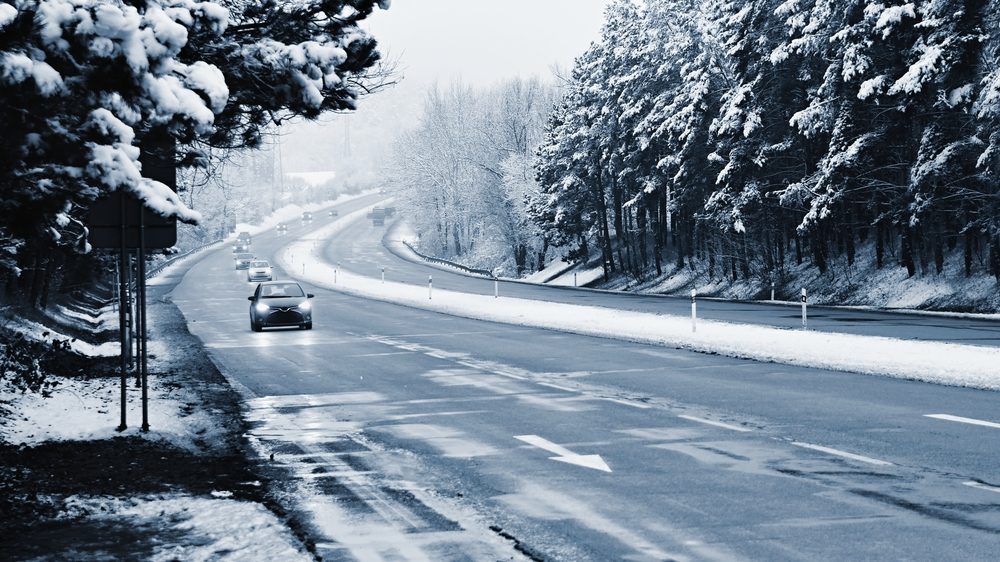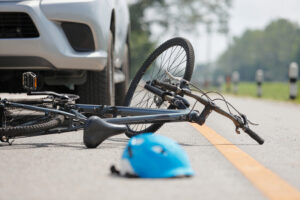
The statistics are staggering. According to the U.S. Department of Transportation’s Federal Highway Administration, on average, 4,900 fatal car crashes occur on slippery roads in the U.S. every year. It also found that icy roads accounted for an average of 1,800 deaths and 136,000 injuries each year in a ten-year period.
Such crashes can also be a cause for financial devastation. Those suffering injuries face thousands of dollars in medical bills, lost wages, and perhaps expenses for long-term care. For families already grieving the loss of a loved one killed in a car crash also face funeral costs.
In pursuing a claim for personal injuries or wrongful death caused by a car accident or truck accident involving icy or slippery roads, proving that the crash was caused by negligent or careless driving is a challenge. Virginia law does not consider skidding alone on a slippery road to be enough proof that the driver was negligent. Rather, the injured party must prove that the skidding was due to careless conduct of the driver, such as driving too fast for conditions.
The long-standing law involving skidding on slippery roads is stated in Virginia Model Jury Instruction No. 10.040, which states:
The fact that a vehicle skidded on a slippery road is not, of itself, sufficient to establish negligence on the part of the driver. If you believe by the greater weight of the evidence that the skidding was caused by failure of the defendant to act as a reasonable person would have acted under the circumstances, then he was negligent. If you believe that the slippery condition of the road was the only cause of the skidding, then the defendant was not negligent.
In a very practical sense, presenting evidence to satisfy the burden of proving the skidding was due to careless conduct is often difficult. That is, the driver will often say that he or she was driving carefully for the conditions or that they did not know that the road was slippery.
Let’s take a look at a skidding accident case
An example of this type of crash and jury trial is found in the Newport News 1992 case Edlow vs. Arnold, 243 Va. 345, 415 S.E.2d 436 (1992). Catherine Edlow sued Alicia Arnold, claiming $100,000 in damages for personal injuries sustained in a collision. On an icy road, Edlow was driving a car and stopped to pick up a passenger at a service road. Her vehicle was struck from behind by Alicia Arnold’s vehicle, causing her back injuries.
In considering whether Arnold was negligent and legally responsible for causing the crash, the trial judge gave the jury the following guidance, in part:
Mere proof of skidding of a motor vehicle on a slippery roadway does not establish negligence on the part of its operator but is a circumstance to be considered along with all of the other evidence in determining whether negligence has been shown.
According to court documents, Arnold testified that she was driving at a cautious distance about five or six car lengths behind the Edlow car. When she applied her brakes, she hit the ice, which caused her to slide into Edlow’s car. After hearing testimony not only from the drivers themselves but also from three eyewitnesses as to the icy conditions of the road, the jury concluded the Arnold conducted herself as “…an ordinarily prudent person would have done under the circumstances prevailing.’’ The jury found that Arnold was not negligent, which was affirmed on appeal by the Virginia Supreme Court.
How to avoid skidding in wintery road conditions
While AAA encourages us to stay home when weather conditions are hazardous, here are some tips for drivers who have to navigate snowy or icy roads this winter:
- Drive slowly. Always adjust your speed to account for lower traction when driving on snow or ice.
- Accelerate and decelerate slowly. Apply the gas slowly to regain traction and brake gently to avoid skids. Don’t try to get moving in a hurry and take time to slow down for a stoplight. Remember: It takes longer to slow down on icy roads.
- Increase your following distance to five to six seconds. This increased margin of safety will provide the longer distance needed if you have to stop.
- Know your brakes. Whether you have antilock brakes or not, keep the heel of your foot on the floor and use the ball of your foot to apply firm, steady pressure on the brake pedal.
- Don’t stop if you can avoid it. There’s a big difference in the amount of inertia it takes to start moving from a full stop versus how much it takes to get moving while still rolling. If you can slow down enough to keep rolling until a traffic light changes, do it.
- Don’t power up hills. Applying extra gas on snow-covered roads will just make your wheels spin. Try to get a little inertia going before you reach the hill and let that inertia carry you to the top. As you reach the crest of the hill, reduce your speed and proceed downhill slowly.
- Don’t stop going up a hill. There’s nothing worse than trying to get moving up a hill on an icy road. Get some inertia going on a flat roadway before you take on the hill.
Also, if you have a vehicle equipped with anti-lock brakes, do test them in an empty parking lot at a slow speed to get the feel of the pulsating pedal so that you will not panic if and when that happens on a slippery road, as that sensation is how the brakes are designed to work.
If you or someone you know has been involved in an accident due to wintery road conditions, Curcio Law has the experience and resources to obtain the compensation you deserve. Give us a call or text us at 703-836-3366, email info@curciolaw.com, or visit www.curciolaw.com.

Tom Curcio has devoted his career to representing people seriously injured or killed in car, pedestrian, bicycle, and truck crashes, and by dangerous dogs, unsafe products, and premises. He works tirelessly to obtain the compensation his clients are legally entitled to so they may rebuild their lives with dignity. Tom is the co-author of the book Evidence For The Trial Lawyer, and a much sought-after speaker on personal injury, trial practice, evidence, and professionalism. Contact Tom at tcurcio@curciolaw.com.










Comments for this article are closed.